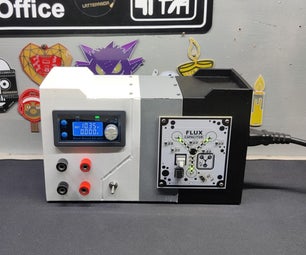Introduction: Making a Simple Joule Thief (made Easy)
Today I am showing you how to make a very simple joule thief. A joule thief has many applications, the best gadget that I made with was a "Water Powered Lamp", soon I'm going to post on a guide about it but first I need to post this guide. I used an iPhone 4S as my camera :)))
My Next Projects That Involves A Joule Thief: (soon to be posted)
What Is A Joule Thief ?
To simplify everything, a "joule thief" is a circuit that helps drive an LED light even though your power supply is low. What can we do with it? We can use it to squeeze the life out of our old, almost drained, non functioning batteries. This project can also be considered as a green and environmental experiment, we can also use it as a flashlight that can be ran by an old, weak, almost drained battery. I even tried to use my water powered battery from my previous instructable the "Water Powered Calculator", the project was featured and displayed in instructable's front page in the "Technologies" category.
My Next Projects That Involves A Joule Thief: (soon to be posted)
- Water Powered Lamp
- Water Powered Flash Light
- Dead Battery Drainer Lamp
Here's A Video From Make Magazine:
Step 1: Parts and Materials
The Parts Needed Are: (click the item to know where to find/ buy)
- Round Ferrite Toroid (can be found in old CFL bulbs)- Old/ Used Batteries (can be found in garbage cans)
- NPN Transistor (2N3904)
- 1K Resistor (BRN-BLK-RED)
- LED Light
- Battery Tester (optional)
- Soldering Lead
- Copper Wire/ Magnet Wire
- Battery Case/ Holder
I want to share something. Here in the Philippines electronic parts are extremely cheap, they are extremely far cheaper from
radio shack, for example one transistor costs (2 phil. pesos - 6 US cents), a LED cost (9 phil. peso - 29 US cents) and a 1K resistor cost (25 phil. cents - 0.8 US cents). I usually buy thing from Deeco or Alexan. Usually prices here are 15x cheaper from radio shack. Price conversion - $1 US Dollar = P0.31 Philippine Peso (12/24/11).
Step 2: Schematic Diagrams
Here are the schematic diagrams that are involved with the joule thief circuit.
Step 3: Winding Wire at the Toroid
First, connect both ends of the copper wire before wounding, be sure to remove the insulation. Then try to solder the ends so it would not split up. Second, wind the wire until you run out of space in the round ferrite toroid. I have some tips for you, try to use a gauge #22 enamel coated copper wire for better performance, oh! my last tip is that "the more you wind the wire to the ferrite toroid the better".
Step 4: Soldering the Resistor
Solder the resistor with one end of the wounded ferrite toroid's wire. Oh! also don't forget to level the other end of the resistor with the other unused wire from the wounded ferrite toroid.
Step 5: Soldering the Transistor
Solder the proper connections to the transistor. For the emitter - connect another wire, the wire will be connected to the negative part of the battery. For the base - solder the other end of the resistor to the base. For the Collector Solder the unused wire of the ferrite toroid.
Step 6: Soldering the LED
Solder the shorter wire of the LED to the tansistor's emitter and the longer part of the LED to the transistor's collector. After all that, you can now trim the excess wires.
Step 7: Time to Look for Old Batteries
Use your battery tester to confirm that your battery is close to death. The tester is only an optional tool, it's just used to determine the battery's remaining power.
Step 8: Time to Test It - You're Done !!
The wire connected to the transistor's emitter should be connected to the battery's negative side and the remaining wire of the ferrite toroid should be connected to the battery's positive side. Oh! one more thing, I advise everyone to use a battery case or attach a conductive magnet for each wire, so you wouldn't hold it all the time.

Participated in the
Make It Glow Challenge

Participated in the
The Mad Science Fair

Participated in the
Holiday Gifts Challenge











